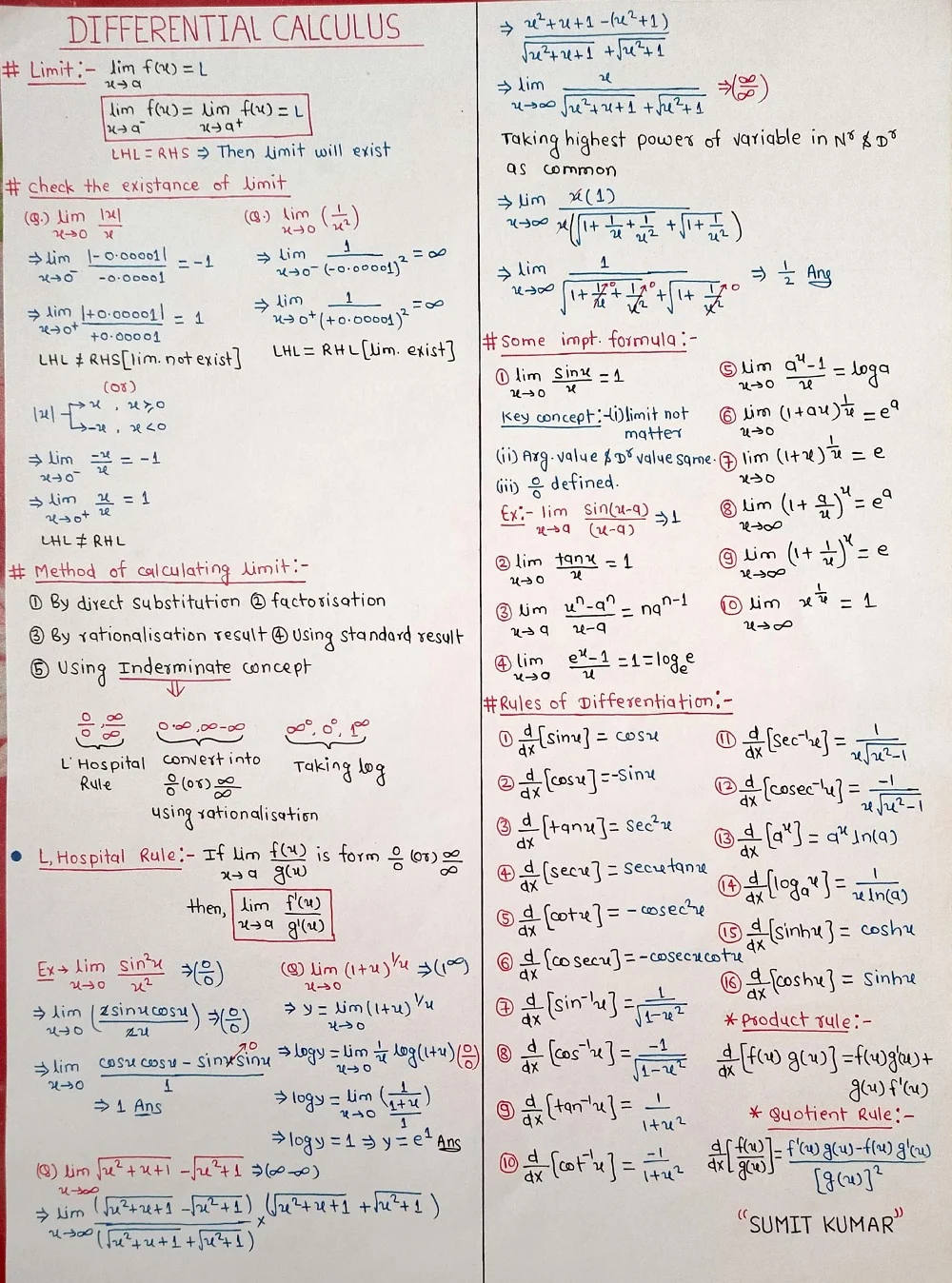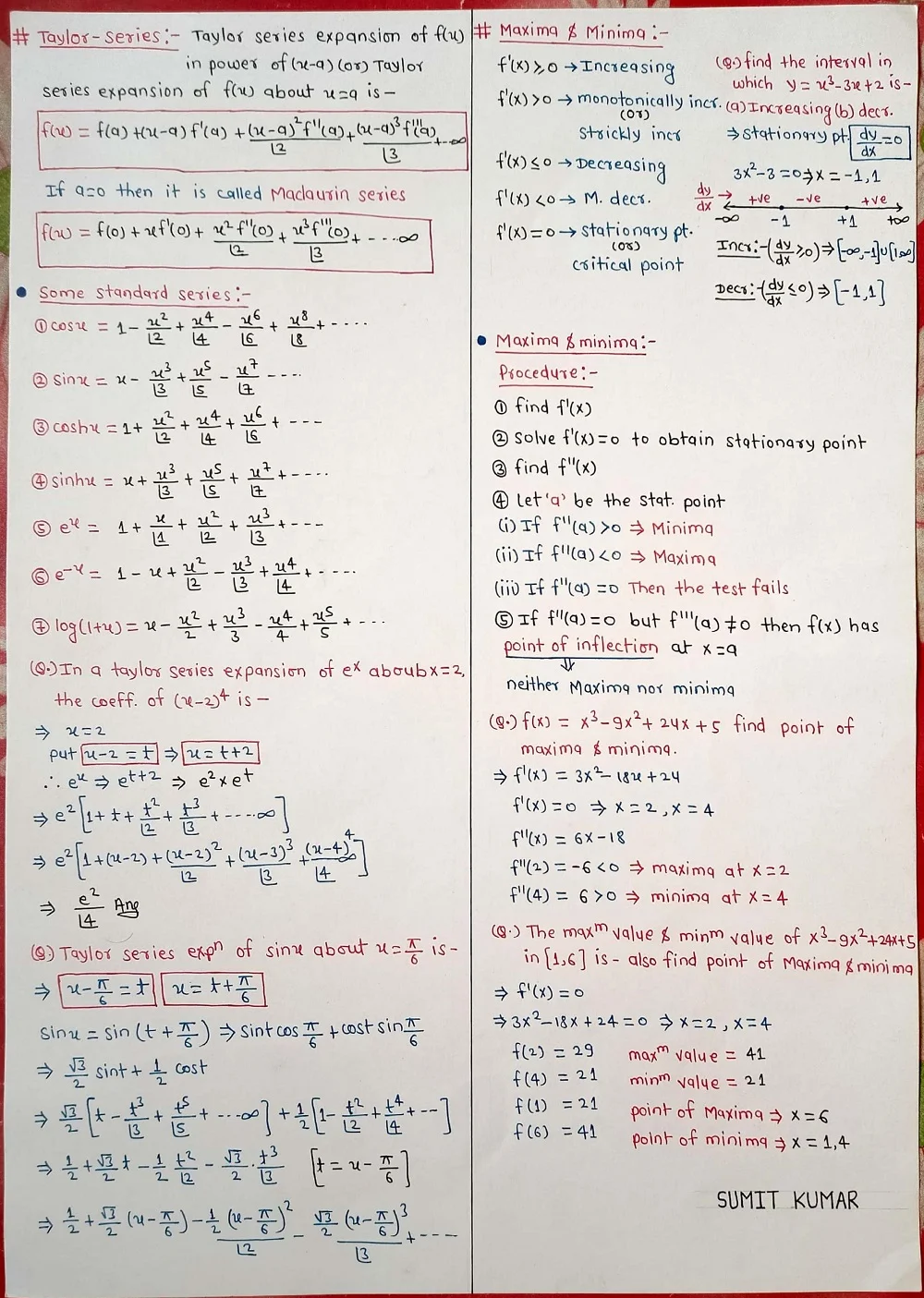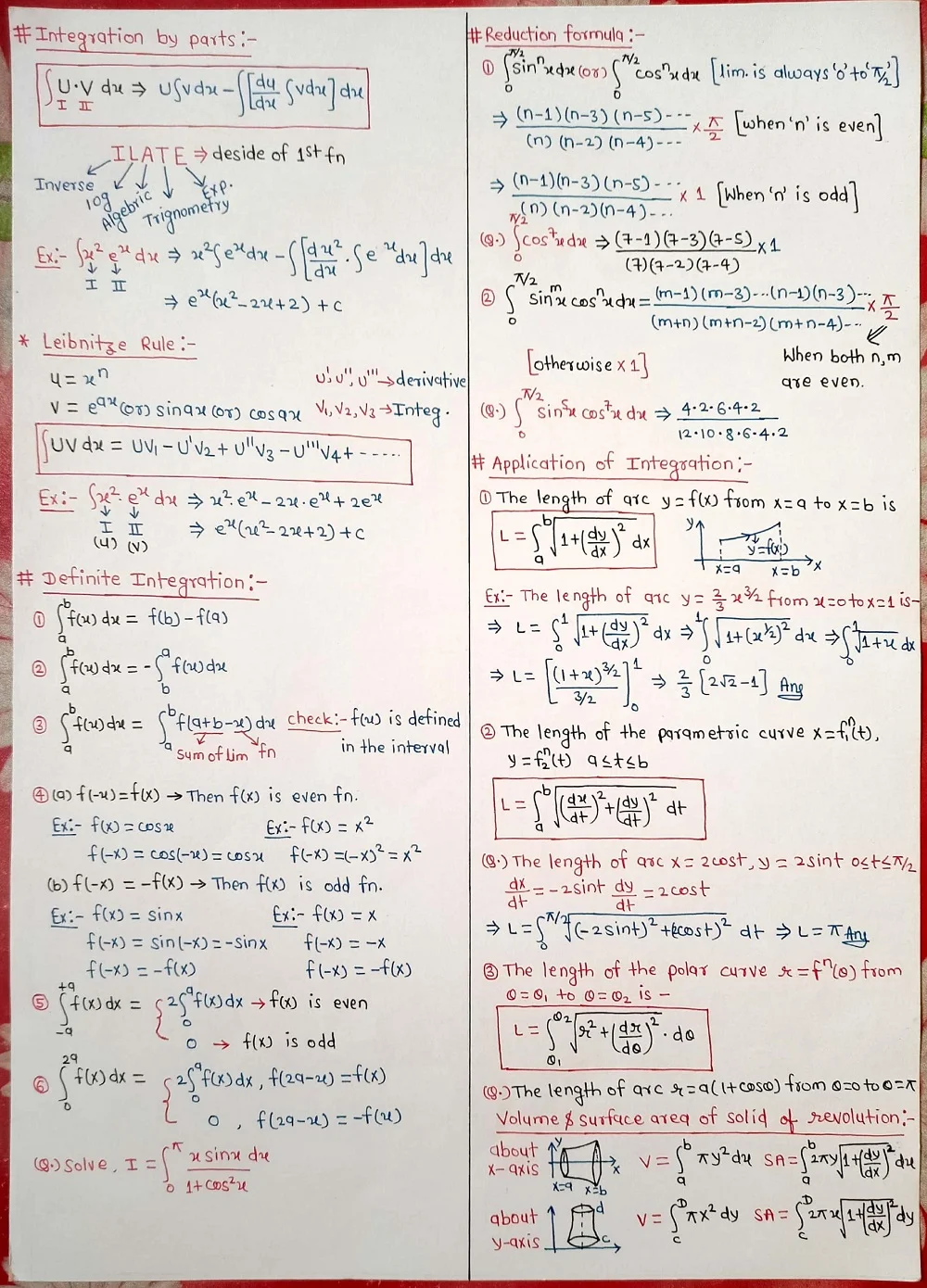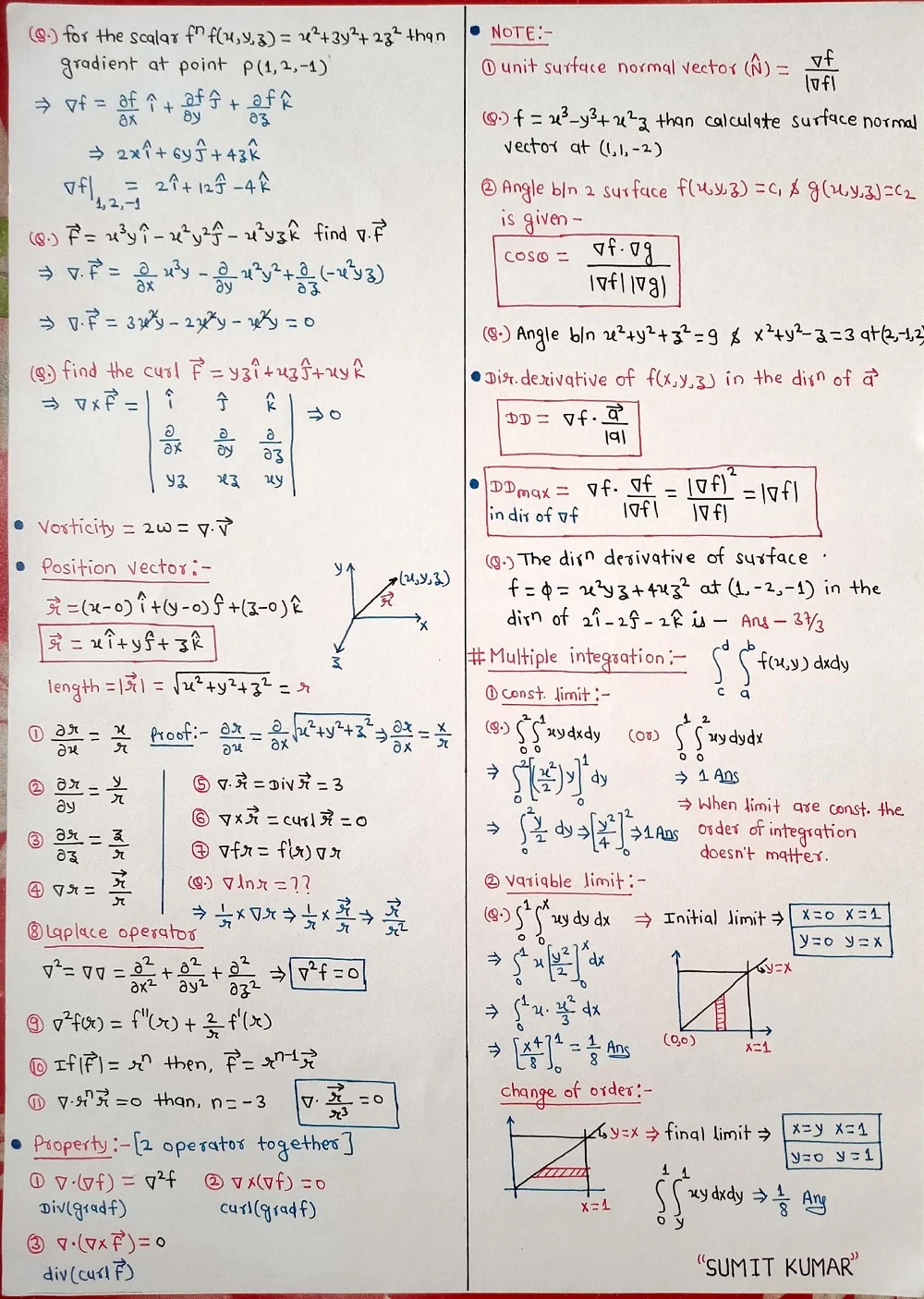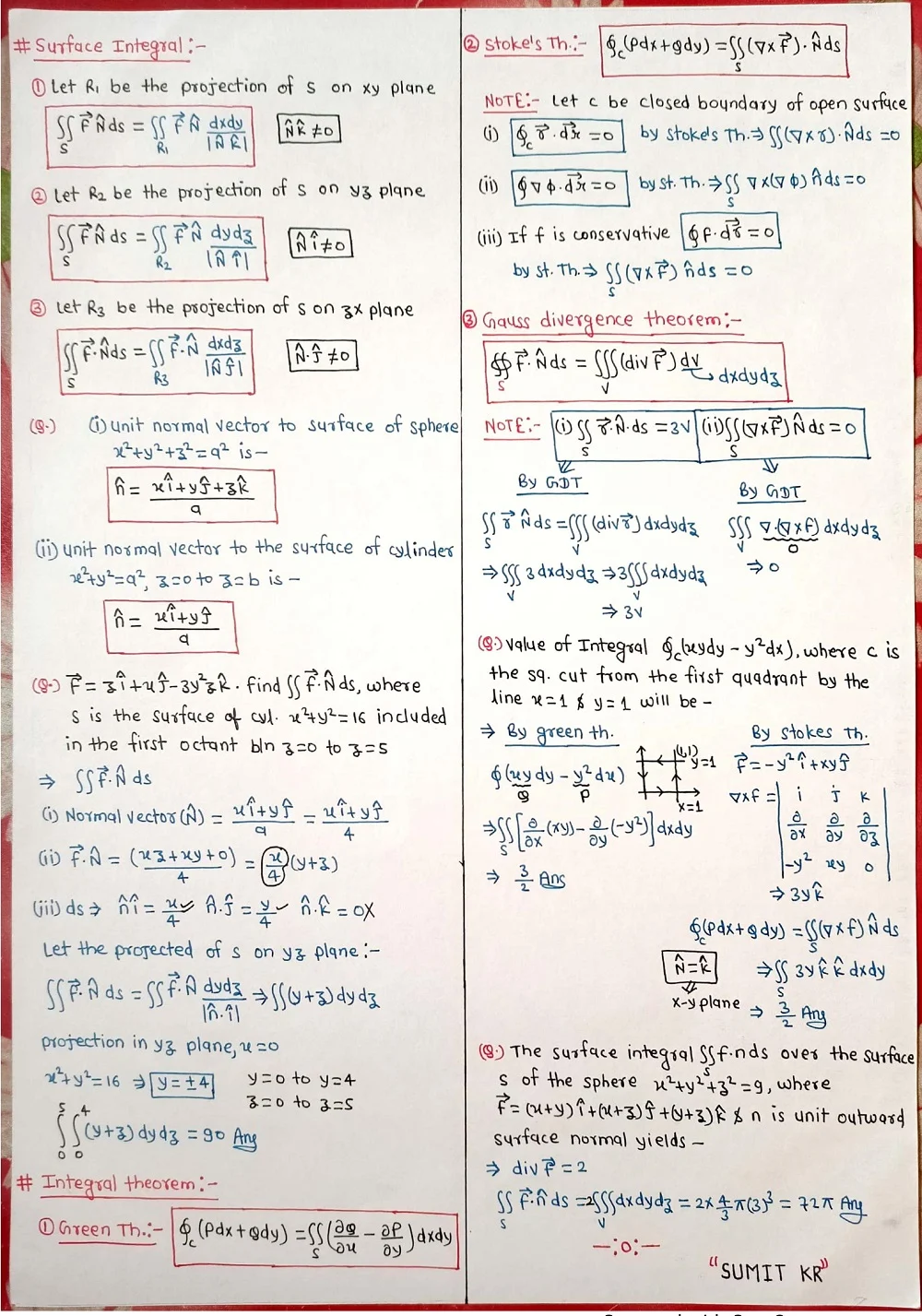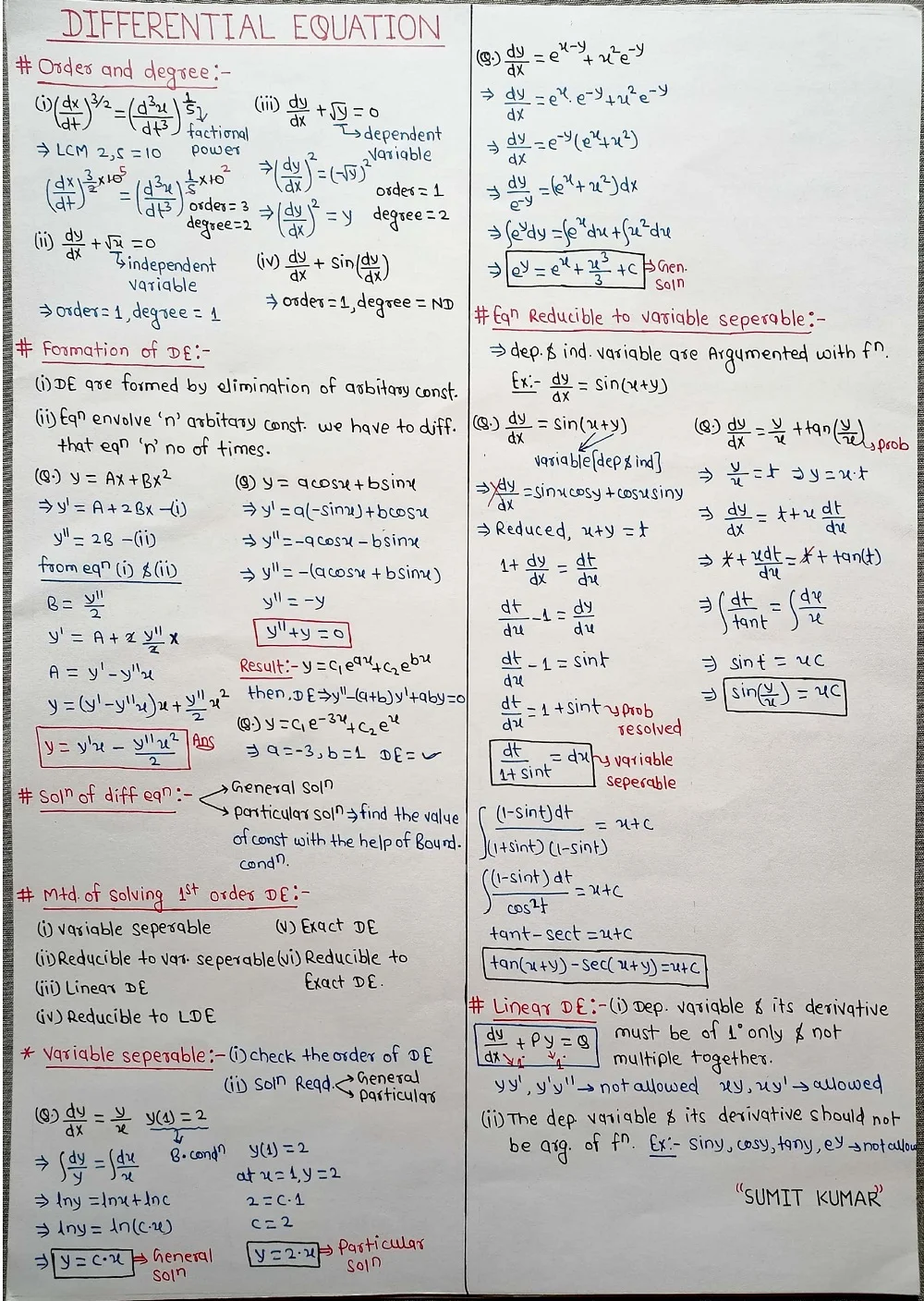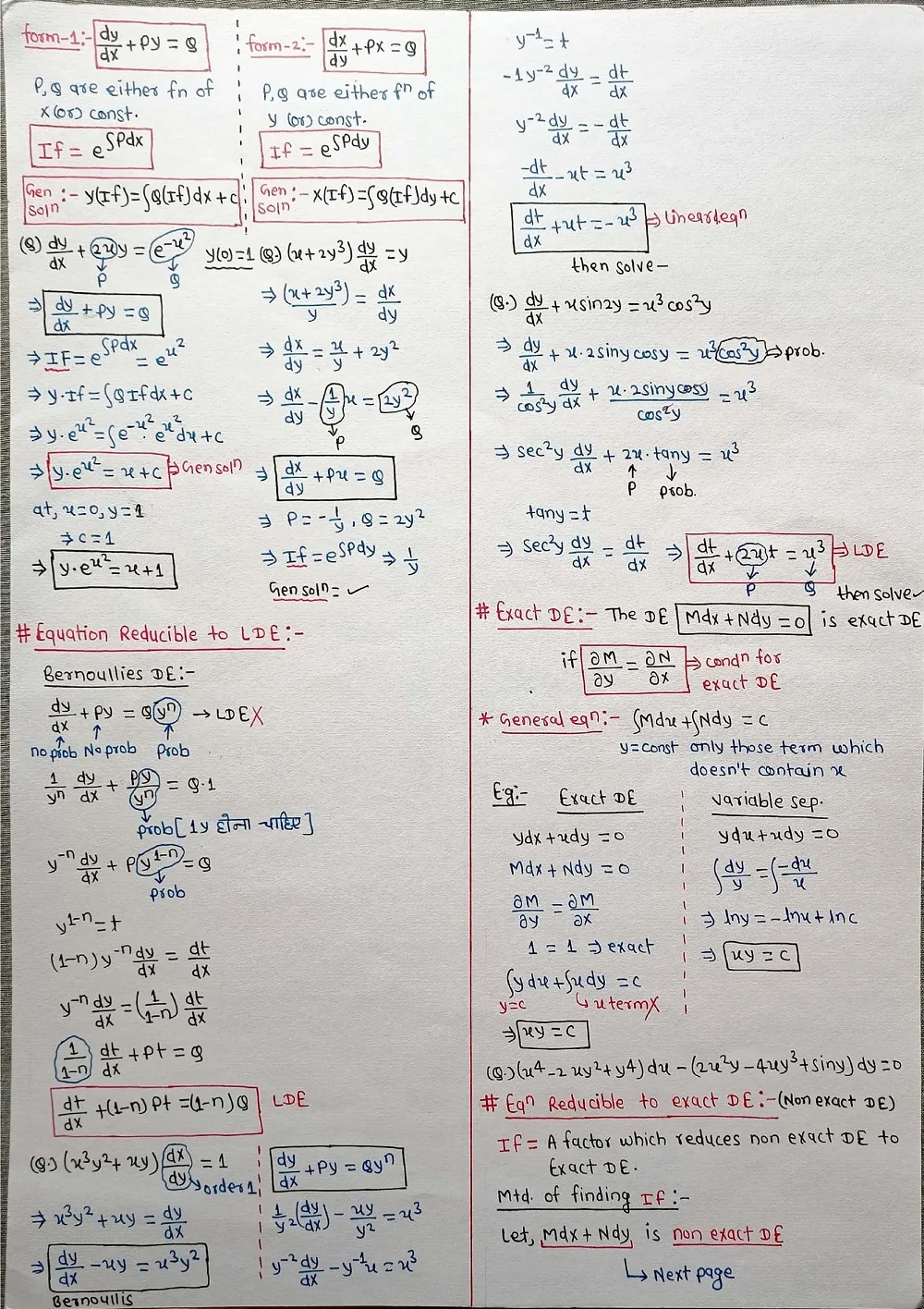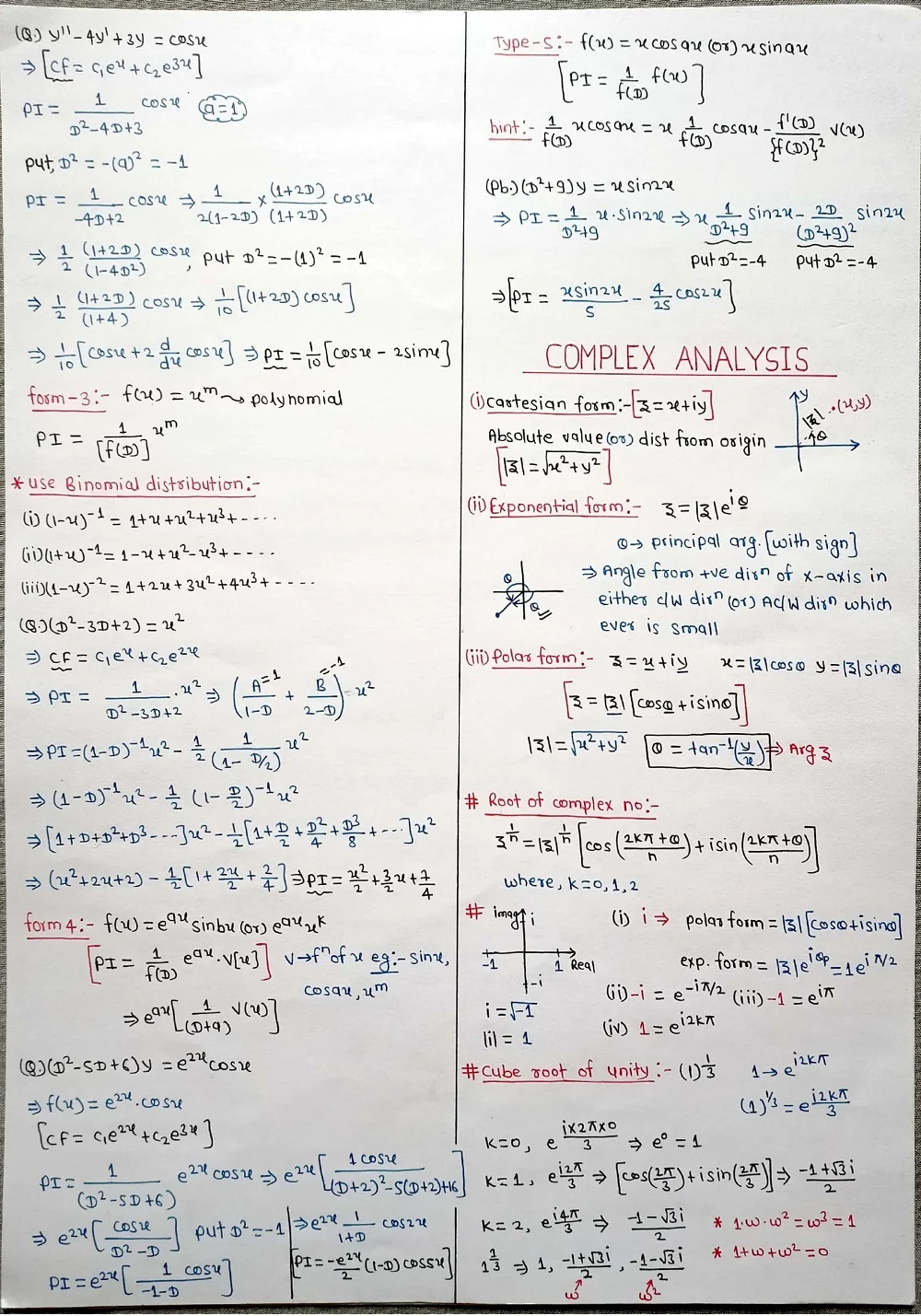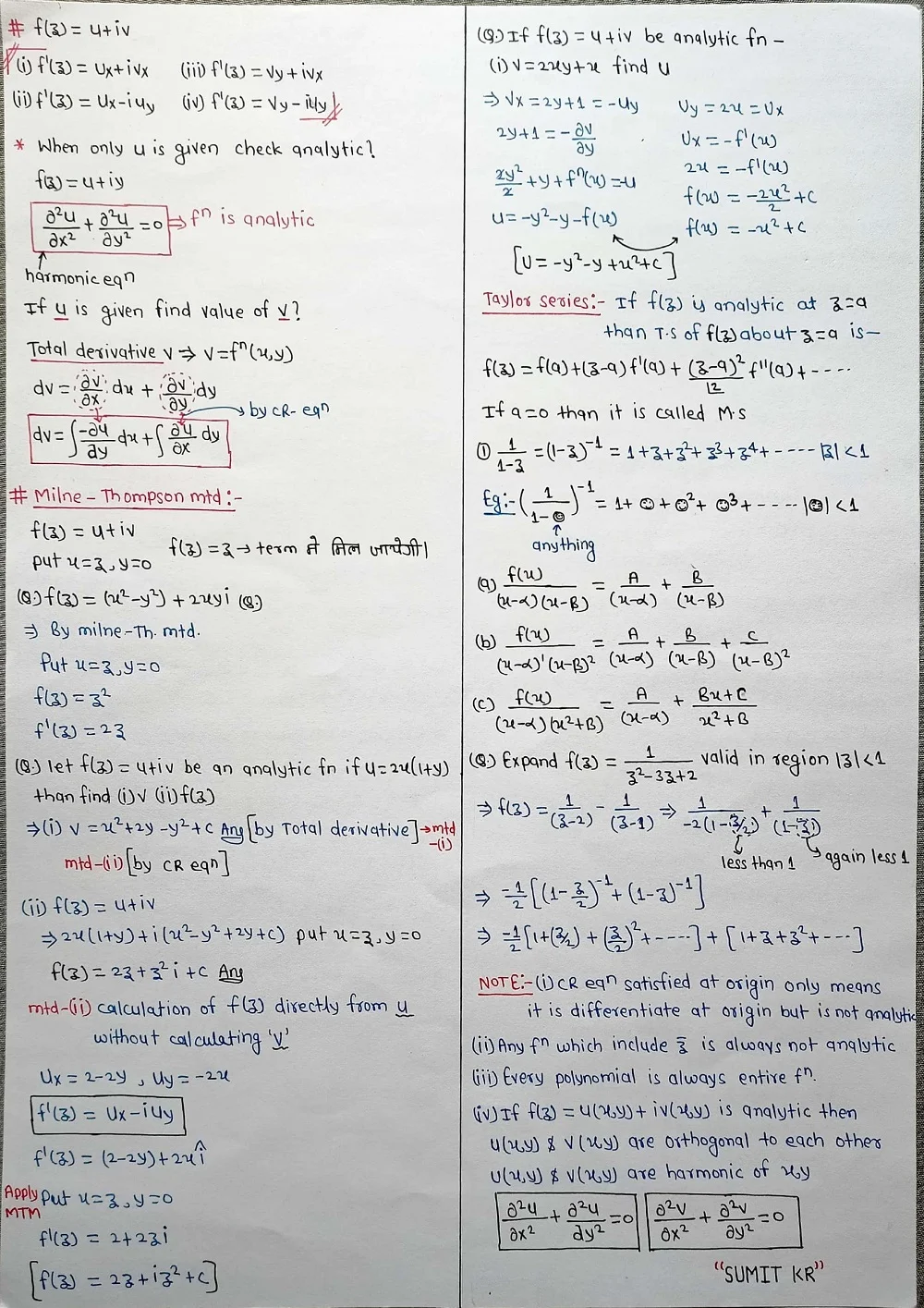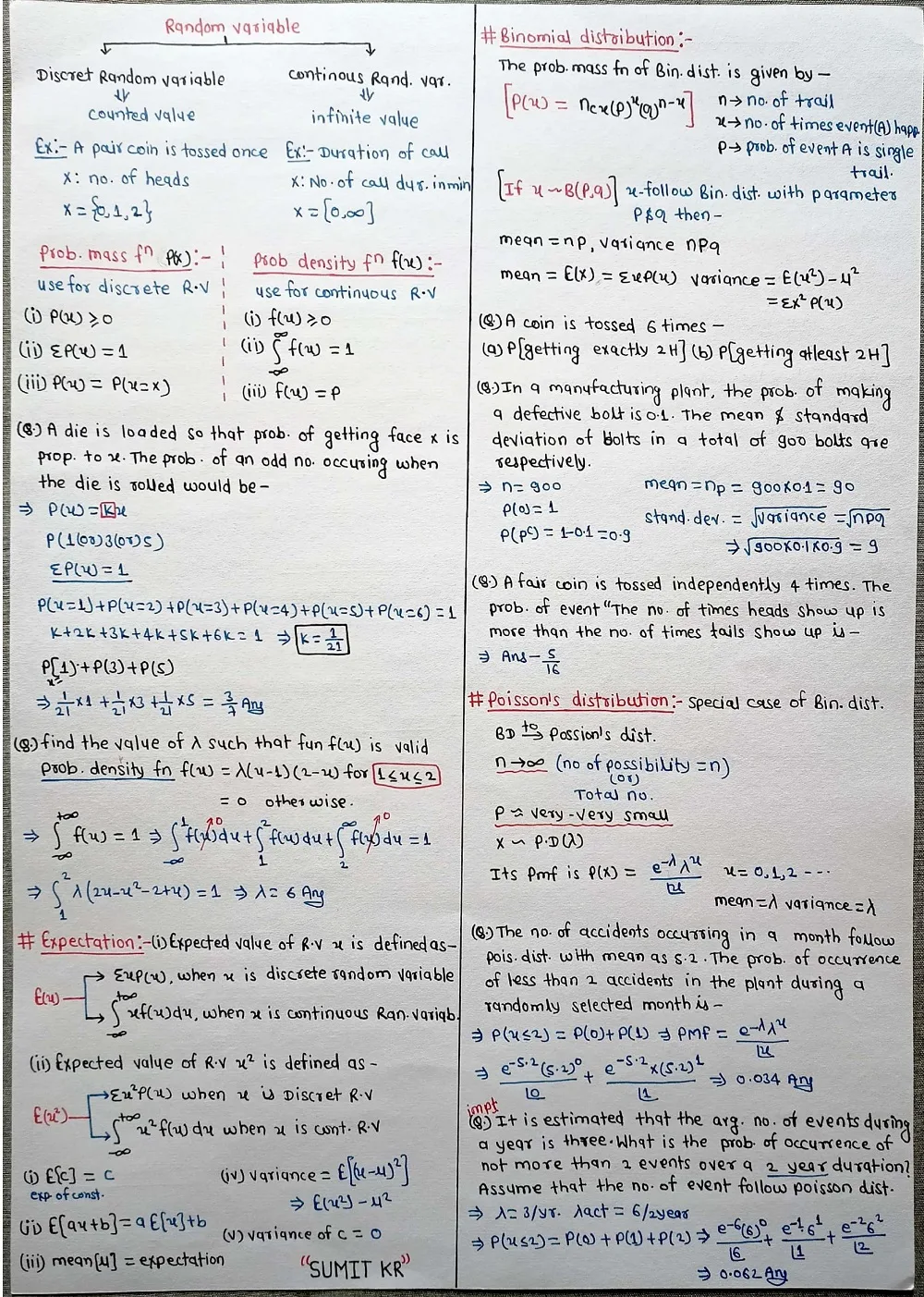Mathematical Formulas: A Guide to Core Concepts - This comprehensive guide explores fundamental mathematical formulas across various subfields, including linear algebra, numerical methods, Laplace transforms, differential calculus, integrations, vector calculus, differential equations, complex analysis, and probability. Each section will provide a clear definition of the concept, delve into its various types, showcase illustrative examples, and highlight its practical applications.
1. Linear Algebra
Definition: Linear algebra is a branch of mathematics concerned with vector spaces, linear transformations, matrices, and their properties.
Linear Algebra Types:
⦿Vectors: Represent mathematical objects with magnitude and direction. (e.g., force, velocity)
⦿Matrices: Rectangular arrays of numbers used for linear transformations.
⦿Linear Transformations: Mappings between vector spaces preserving linear relationships.
Linear Algebra Examples:
- Solving systems of linear equations using matrices (Gaussian Elimination)
- Finding eigenvalues and eigenvectors for diagonalization of matrices
Linear Algebra Applications:
⦿Computer graphics: Representing 3D objects and transformations
⦿Machine learning: Dimensionality reduction, data analysis
⦿Physics: Modeling physical systems, analyzing forces and motions
2. Numerical Methods
Definition: Numerical methods are a collection of techniques used to solve mathematical problems approximately using computers.
Numerical Methods Types:
⦿Root-finding algorithms: Finding solutions (roots) of equations. (e.g., Newton-Raphson method)
⦿Integration techniques: Estimating definite integrals numerically. (e.g., Trapezoidal rule)
⦿Differential equation solvers: Obtaining approximate solutions to differential equations.
Numerical Methods Examples:
⦿Numerical differentiation: Approximating derivatives of functions
⦿Numerical integration: Calculating areas under curves
Numerical Methods Applications:
⦿Engineering: Analyzing complex systems, simulating physical phenomena
⦿Finance: Modeling financial instruments, risk assessment
⦿Scientific computing: Solving large-scale mathematical problems
3. Laplace Transform
Definition: The Laplace transform is an integral transform that converts a function from the time domain to the frequency domain (s-domain).
Laplace Transform Types:
⦿Unilateral Laplace transform: Applicable for functions defined only for positive time (t ≥ 0).
⦿Bilateral Laplace transform: Applicable for functions defined for all real numbers (positive and negative time).
Laplace Transform Examples:
- Solving differential equations by transforming them into algebraic equations.
- Analyzing the behavior of electrical circuits in the frequency domain.
Laplace Transform Applications:
⦿Control systems analysis: Design and stability analysis of feedback systems
⦿Signal processing: Filtering and analyzing signals in various domains
4. Differential Calculus
Definition: Differential calculus is a branch of calculus that deals with finding the rates of change and slopes of curves represented by functions.
Differential Calculus Types:
⦿Differentiation: The process of finding the derivative of a function, representing its instantaneous rate of change.
⦿Applications of derivatives: Maxima/minima problems, optimization, tangent lines
Differential Calculus Examples:
- Finding the velocity of a moving object from its displacement function.
- Calculating the marginal cost of production from a cost function.
Differential Calculus Applications:
⦿Physics: Describing motion, forces, and acceleration
⦿Economics: Analyzing marginal costs, revenue, and market equilibrium
5. Integrations
Definition: Integration, the opposite of differentiation, is the process of finding the integral of a function, representing the accumulated value over an interval.
Integrations Types:
⦿Definite integrals: Integrals with specified limits of integration, calculating the total area under a curve.
⦿Indefinite integrals: Integrals without specified limits, representing the antiderivative of a function.
Integrations Examples:
- Calculating the total distance traveled by an object from its velocity function.
- Finding the area enclosed by a curve and the x-axis.
Integrations Applications:
⦿Calculus: Fundamental theorem of calculus connects differentiation and integration
⦿Physics: Calculating work done by a force, displacement, and volume
6. Vector Calculus
Definition: Vector calculus extends calculus to three dimensions, dealing with vector fields (functions that assign a vector to each point in space) and their properties.
Vector Calculus Types:
⦿Line integrals: Integration along a curve in space.
⦿Surface integrals: Integration over a surface in space.
⦿Curl and divergence: Operations that measure the rotation and flow of a vector field.
Vector Calculus Examples:
- Calculating the work done by a force moving along a path.
- Finding the flux of a vector field (e.g., electric field) through a surface.
Vector Calculus Applications:
⦿Electromagnetism: Analyzing electric and magnetic fields
⦿Fluid mechanics: Describing the flow of fluids
7. Differential Equations
Definition: Differential equations are mathematical equations that express a relationship between a function and its derivatives. They model various real-world phenomena.
Vector Calculus Types:
⦿Ordinary Differential Equations (ODEs): Involve derivatives of one unknown function.
⦿Partial Differential Equations (PDEs): Involve derivatives of multiple unknown functions with respect to multiple variables.
Vector Calculus Examples:
- Modeling motion with acceleration (e.g., Newton's second law)
- Describing heat flow in a material (e.g., diffusion equation)
Vector Calculus Applications:
⦿Physics: Modeling motion, population growth, radioactive decay
⦿Engineering: Designing control systems, analyzing vibrations
Chemistry: Modeling chemical reactions and kinetics
8. Complex Analysis
Definition: Complex analysis is a branch of mathematics that deals with complex numbers, which consist of a real part and an imaginary part.
Vector Calculus Types:
⦿Analytic functions: Complex functions differentiable in a complex domain.
⦿Conformal mappings: Functions that preserve angles between curves.
Vector Calculus Examples:
- Finding complex roots of polynomial equations.
- Conformal mapping techniques in aerodynamics and fluid flow analysis.
Vector Calculus Applications:
⦿Electrical engineering: Analyzing AC circuits and signal processing
⦿Quantum mechanics: Describing the behavior of subatomic particles
9. Probability
Definition: Probability theory is a branch of mathematics concerned with the likelihood of events occurring. It provides a framework for quantifying uncertainty.
Vector Calculus Types:
⦿Conditional probability: The probability of one event occurring given that another event has already happened.
⦿Random variables: Quantities that take on different values with a certain probability.
Vector Calculus Examples:
- Calculating the probability of getting a specific outcome when rolling a dice.
- Modeling random phenomena in finance, games, and natural sciences.
Vector Calculus Applications:
⦿Statistics: Hypothesis testing, data analysis, risk assessment
⦿Machine learning: Building probabilistic models for prediction and classification
⦿Finance: Portfolio optimization, risk management
This guide provides a foundational understanding of these essential mathematical formulas. Remember, each concept has its own depth and intricacies. Further exploration of these topics using textbooks, online resources, and practice problems will solidify your knowledge and equip you to tackle more advanced applications.



.jpeg)
.jpeg)



